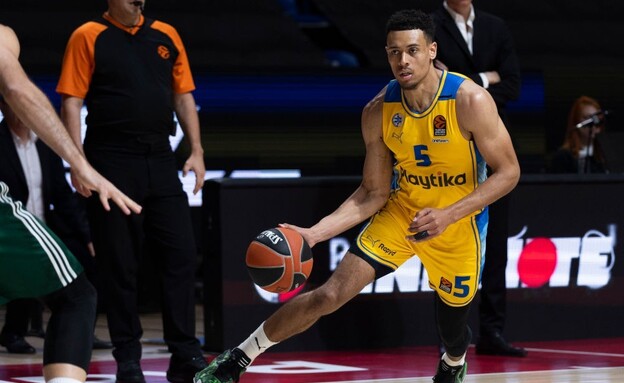In two days, the Maccabi Tel Aviv basketball team will take to the field for the fifth and final game against the Greek team Panathinaikos, in the quarter-final series of the Euroleague playoffs. The one who will not take part in the fateful game is one of the team’s most prominent players, Wade Baldwin, who is suffering from a partial tear in the thigh muscle. As I recall, Baldwin was injured about two weeks ago in the first game against the Greek opponent, and subsequently had to miss two more games. Last Thursday, he returned to the field for the fourth game, but within a few minutes he left the floor in tears, after again feeling a sharp pain in the area of the injury. As of now, there is no expectation of his return, but the estimates are that he will return within a few weeks.
“An injury to the thigh muscles is actually an injury to the hamstring muscle group – knee flexor muscles,” explains Dr. Niv Marom, a senior surgeon in the sports unit in the orthopedic unit at Meir Medical Center from the Klalit Group. According to him, one of the common injuries is a partial or complete rupture of the connection between the tendon and the muscle , or an injury to the muscle itself, and these are considered relatively minor injuries. “There are more serious cases, when the injury is to the tendon itself or to its connection to the bone, in which surgery is also sometimes required. In the case of Baldwin, he did not undergo surgery and returned to the field quite quickly, so it can be assumed that his hip injury is in the area between the tendon and the muscle.”
Regarding pain from such an injury, the doctor says that these may appear as a result of the activation of the muscle and its contraction while bending the knee or while stretching the muscle. “For basketball players, this is noticeable in actions such as running, diving and landing.”
Treatment: mainly physiotherapy and anti-inflammatories
According to him, the initial treatment includes the cessation of activity for a limited period of time, usually between a week and several weeks. “The accepted treatments are appropriate physical therapy during which local treatment is done, working on gradual strengthening of the muscle, and especially on strengthening the nearby muscles that are supposed to take part in the activity while the muscle is injured.” He also adds that the injury can also be treated with anti-inflammatory pills and cold compresses. “Sometimes when the patients are athletes who work with the body on a daily basis, treatment will also be given through biological injections. The biological substance common today is called PRP – Platelet-rich plasma. These treatments have the potential to speed up recovery, but there is no clear evidence that they actually help.”
Dr. Marom adds that during the initial recovery period, scar tissue is formed in the area of the injury, and an early return to activity may pose a risk of re-injury, as happened to Baldwin. “This is one of the reasons we sometimes recommend taking a break from activity for a longer period of time, to give the tissue time to heal properly.”
To prevent sports injuries, he emphasizes the importance of performing a sufficient warm-up before each activity, and relevant stretches to maintain the flexibility of all the muscles and tendons in the leg. “It is also important to strengthen the entire muscular system around the pelvis, hips and knees.”
